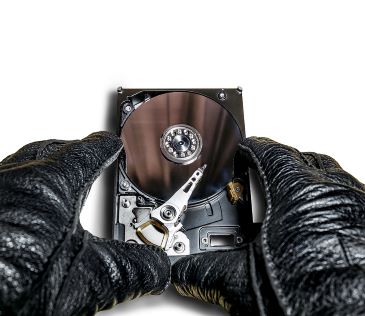Ghost in the Machine: Debunking the Myth of Data Deletion
 The discussion surrounding the concept of the “ghost in the machine” has spanned almost six decades, gaining renewed relevance in today’s era, particularly with artificial intelligence attempting to replicate the human mind and consciousness in our technologically-advanced world. Amidst our modern advancements, another prevailing notion within the “ghost in the machine” realm is the misconception that erasing data from electronic devices equals the complete elimination of that data.
The discussion surrounding the concept of the “ghost in the machine” has spanned almost six decades, gaining renewed relevance in today’s era, particularly with artificial intelligence attempting to replicate the human mind and consciousness in our technologically-advanced world. Amidst our modern advancements, another prevailing notion within the “ghost in the machine” realm is the misconception that erasing data from electronic devices equals the complete elimination of that data.
Disposing of Dead Devices and Ensuring Data Deletion
It’s easier to say the above title quickly five times than it is to responsibly discard your electronic devices without conflicting with data laws. When your storage devices wear out or become outdated, requiring replacement and disposal, these devices must be handled with care:
- Hard Drives and SSDs
- Laptops
- USB Drives
- SD Cards
Before discarding any of these, it’s crucial to safeguard the data stored on them. However, none of the following options provide foolproof protection for your information:
- Storing: Opting to store these devices leaves you vulnerable to potential loss or theft, putting your information at risk of being used unlawfully, and making you liable for any resulting damages.
- Erasing: Attempting to erase data manually is highly unlikely to eliminate all files. Erasing doesn’t guarantee a complete wipe. Data thieves target such devices knowing residual data remains, which they can retrieve. Merely deleting files or formatting drives doesn’t ensure security. Even reformatting doesn’t guarantee data security since data recovery software can reconstruct information. Erasing, deleting, or formatting leaves behind hidden “ghost” files.
- Selling: Whether selling or giving them away for free, passing these devices on leaves the residual data in the hands of the new owner and beyond your control. There’s uncertainty regarding whether the drives will be adequately protected, passed on again, or disposed of without complete data removal.
- Damaging: There’s a common assumption that damaging the drives makes the information unrecoverable. However, someone with IT expertise can retrieve information if information remnants still exist. Attempting to damage drives is not only physically hazardous but also an ineffective solution, especially if the technician has an interest in extracting and selling that information.
The Best Option
To truly exorcise the “ghost in the machine” and obliterate those supposedly impossible-to-find files, the most effective approach is to destroy your drives before disposing of them. Engaging the services of a shredding company that has achieved NAID AAA Certification is the best method for complete destruction, ensuring the data is unrecoverable and that you comply with state and federal privacy laws.
At Richards & Richards, our NAID AAA Certified hard drive shredding and media destruction services guarantee the permanent destruction of all data on your drives. Our industrial shredders render information retrieval impossible and come with a Certificate of Destruction to validate the process. Don’t leave your hidden files vulnerable to data theft. Give us a call at 615-242-9600 or complete the form on this page.
